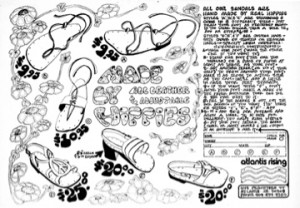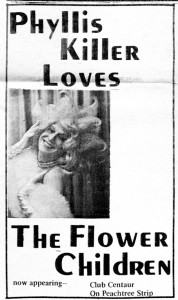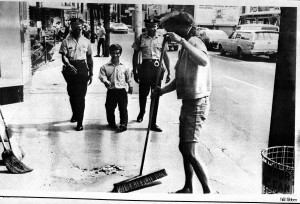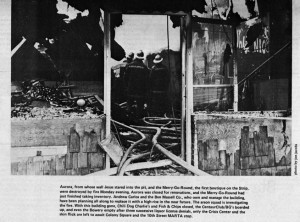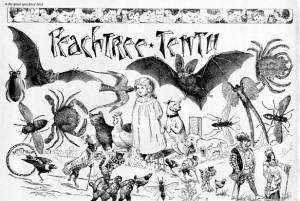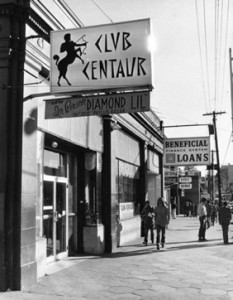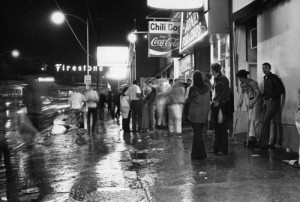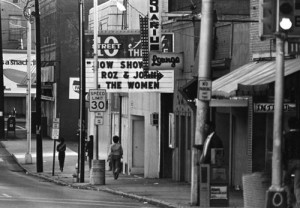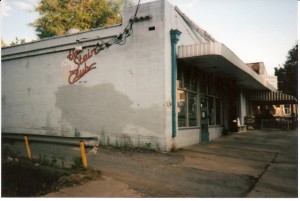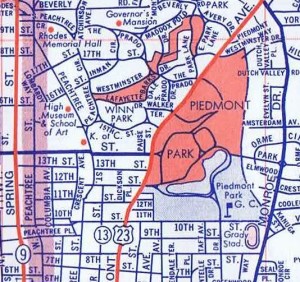 The Strip started on Peachtree around 8th Street with the Krystal and Middle Earth Head Shop. By 10th Street it was in full bloom to about 12th street then scaled down until 14th Street, the Freaky people’s main street to Piedmont Park. A place for cars and the hip crowd to be seen. In the early seventies a visit to Atlanta was sure to include a trip to view The Strip
The Strip started on Peachtree around 8th Street with the Krystal and Middle Earth Head Shop. By 10th Street it was in full bloom to about 12th street then scaled down until 14th Street, the Freaky people’s main street to Piedmont Park. A place for cars and the hip crowd to be seen. In the early seventies a visit to Atlanta was sure to include a trip to view The Strip
Dr. Richard Hooker giving this painting of The Strip to Patti Kakes was the impetus to finally actually begin this whole project.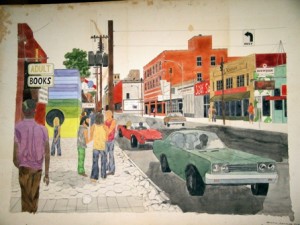
The Strip on Peachtree was the commercial area of the Hip community. It had shops for members of the hip community to buy and sell the items unique to the community’s needs, such as papers, pipes, sandals, literature. It also had stores for expensive “hippie” clothes, many made by community craftspeople for well-off suburban followers and fashion plates. It also was the marketplace for drugs both benign and harmful. The Strip was where the straight and hip worlds joined together in commerce.
As you can see in the painting there were many cars and people driving and walking up and down the strip all day. The bright colors on clothes as well as auto parts on brightly painted 1960’s vehicles were much more vibrant than almost anything you’d see today. The Strip was named as self-deprecating Southern humor. “Let’s go to the Strip”, of four stores.
The classic cars on the strip were also a lot louder driving since the auto parts to silence the vehicles didn’t come around until later decades. If you were lucky enough to have a car at that time to play AM and FM stations you might also hear some of the popular music playing through car windows while walking the strip. In 1962 The area was hailed as “Atlanta’s own Greenwich Village”.
The History of The Strip aka Tight Squeeze.
Atlantis Rising was a hip emporium of small craftspeople and shops.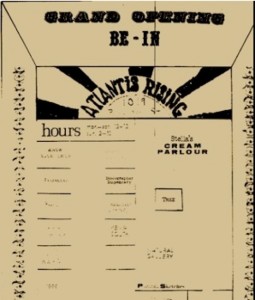
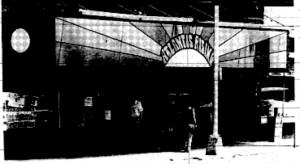
The Strip was an eye opening education for many small town kids.
http://www.time.com/time/printout/0,8816,944407,00.html
At opposite ends of Atlanta’s Peachtree Street, the white youth of the South stare across a gap within a generation. Airline stewardesses and young businessmen by the hundreds push into a converted warehouse called Uncle Sam’s six nights a week for beer and music. They are the city’s singles, decked out in bell-bottoms and hot pants, in from the fancy apartment complexes surrounding Atlanta. At midnight Friday and Saturday, they don Uncle Sam paper hats passed out by the management to the tune of The Battle Hymn of the Republic and Dixie. When Lieut. William Calley was released from the Fort Benning stockade, Owner Don Davis dedicated the night’s festivities “to Richard Nixon and Rusty Calley.” Says Davis: “This is where the Silent Majority can make noise.”
Farther downtown on Peachtree, another youth community holds sway. Boutiques and head shops, long hair and beards, communal living and radical politics set the residents of the counterculture’s Southern headquarters off from their contemporaries at Uncle Sam’s. Although resistance to the hippies has resulted in periodic crackdowns along “The Strip,” the community has emerged with its own self-help alliance to provide social and medical services to the permanent and transient members of the neighborhood. The hip community is now so firmly established on the city’s scene that Mayor Massell dropped in on a recent “People’s Fair” in nearby Piedmont Park. Massell’s ingenuous explanation: “I’m people, aren’t I?”
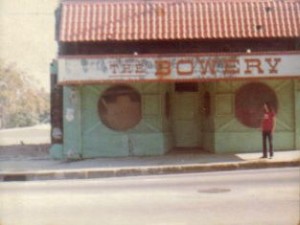
Charlie Brown drew this map to locate the stores on The Strip.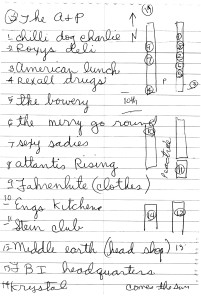
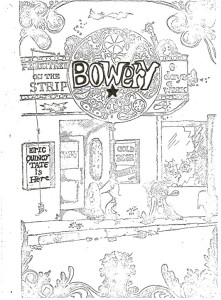 By Donnie McCormick of Eric Quincy Tate
By Donnie McCormick of Eric Quincy Tate
The corner of 10th and Peachtree, the pit catty-cornered to “The Dump”, became a People’s Square for a while. 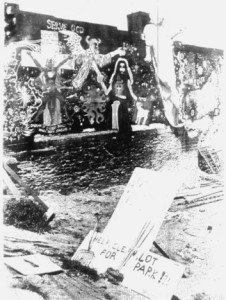
Centaur Club on the Strip featuring Diamond Lil, a drag queen rocker.
10th Street Art
Dealing and socializing at Peachtree at 8th across from Middle Earth. 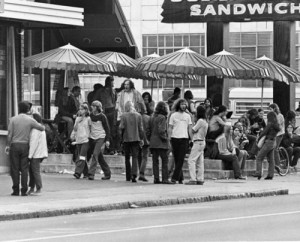
The Stein Club for more intellectual sorts.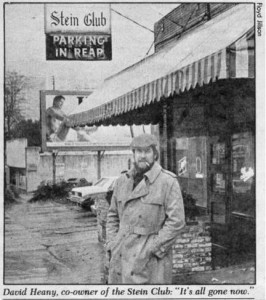
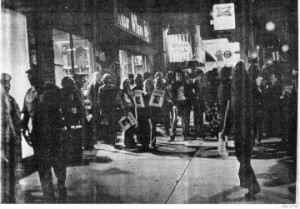
Peace and Love came to The Strip in the 1960’s. Then it Vanished.
By Miller Francis
